 History
History  History
History  Creepy
Creepy 10 More Representations of Death from Myth, Legend, and Folktale
 Technology
Technology 10 Scientific Breakthroughs of 2025 That’ll Change Everything
 Our World
Our World 10 Ways Icelandic Culture Makes Other Countries Look Boring
 Misconceptions
Misconceptions 10 Common Misconceptions About the Victorian Era
 Mysteries
Mysteries 10 Strange Unexplained Mysteries of 2025
 Miscellaneous
Miscellaneous 10 of History’s Most Bell-Ringing Finishing Moves
 History
History 10 Great Escapes That Ended Right Back in Captivity
 Weird Stuff
Weird Stuff 10 Fascinating Things You Might Not Know About Spiders
 Food
Food 10 Everyday Foods You Didn’t Know Were Invented by the U.S. Military
 History
History 10 Most Influential Protests in Modern History
 Creepy
Creepy 10 More Representations of Death from Myth, Legend, and Folktale
 Technology
Technology 10 Scientific Breakthroughs of 2025 That’ll Change Everything
Who's Behind Listverse?

Jamie Frater
Head Editor
Jamie founded Listverse due to an insatiable desire to share fascinating, obscure, and bizarre facts. He has been a guest speaker on numerous national radio and television stations and is a five time published author.
More About Us Our World
Our World 10 Ways Icelandic Culture Makes Other Countries Look Boring
 Misconceptions
Misconceptions 10 Common Misconceptions About the Victorian Era
 Mysteries
Mysteries 10 Strange Unexplained Mysteries of 2025
 Miscellaneous
Miscellaneous 10 of History’s Most Bell-Ringing Finishing Moves
 History
History 10 Great Escapes That Ended Right Back in Captivity
 Weird Stuff
Weird Stuff 10 Fascinating Things You Might Not Know About Spiders
 Food
Food 10 Everyday Foods You Didn’t Know Were Invented by the U.S. Military
10 Forms Of Satanism That Exist Around The World
What is Satanism? Is it full of Devil-worshiping maniacs who sacrifice children? Not exactly. True, there have been several Satanic cults that have performed terrible deeds, but like any other religion, Satanism can be divided into several different branches and sects. The most famous form of Satanism is Anton LaVey’s Church of Satan in San Francisco. They are not literal believers, and Satan simply represents “the adversary” to traditional Christian values, e.g. indulgence vs. abstinence or revenge vs. turning the other cheek.
However, there are many other forms of Satanism that haven’t quite achieved the same fame as the Church of Satan. Some of them are atheistic like LaVey’s version, while others do see the Devil as a literal being. Some of them have received some mainstream attention, but others have remained extremely obscure. Regardless, followers of the Left-Hand Path have devised many ways to express their own version of Satanism. Here are just a few.
10 The Satanic Temple
The Satanic Temple is an organization that probably wouldn’t fit most people’s idea of what a Satanist is. After all, their goals are to “encourage benevolence and empathy” and “embrace practical common sense and justice.” Much like Anton LaVey’s version of Satanism, the Satanic Temple doesn’t actually believe in or worship Satan. They see him as a symbol—a rebellious figure against tyranny and authority.
Regardless of their lack of belief, the Satanic Temple considers itself to be a religion and believes that religion should be based on science and critical thinking rather than supernatural or superstitious claims. To them, Satanism provides them with everything that a religion should provide—a sense of identity, symbolic practices, and a community of those with similar beliefs.
The Satanic Temple has gained notoriety by pushing the boundaries of free speech and having a go at fundamentalist Christians. The group is most famous for trying to erect a statue of Baphomet in Detroit because the city had approved a statue of the Ten Commandments. The logic was that if Christians were allowed to publicly profess their religion, then they should, as well.
After the Hobby Lobby decision, which allows religious organizations to opt out of providing birth control, the Satanic Temple decided to use their own status as a religion to challenge US laws. They claimed that “informed consent” laws, which require doctors to share state-approved information to a woman before she has an abortion, violate their religious beliefs because some of the shared information has been deemed unscientific by the members.
The Satanic Temple also held a “Pink Mass” in 2013 at the grave site of Fred Phelps’s mother. Phelps is the head of the Westboro Baptist Church, an extremist Christian group that is notorious for their opposition to homosexuality. The Pink Mass involved gay couples kissing in order to make Phelps’s mother “gay in the afterlife.”
9 Luciferianism
Luciferians are rather similar to LaVeyan Satanists. Most of them are nonreligious and simply treat Lucifer as a symbol. The 11 Luciferian Points of Power, provided by the Greater Church of Lucifer, illustrate how Lucifer represents values like self-determination and liberation from “slave mentality.” In this regard, Luciferianism falls closer to a philosophy rather than an actual religion. The Neo-Luciferian Church states that Luciferianism’s core goal is to help people “take responsibility for [their] own life and act as an individual moral agent, using the full potential of [their] own genius and thereby optimizing [their] own possibilities.”
Luciferians also see Lucifer as being a completely different entity than Satan. The Greater Church of Lucifer states that the word “Lucifer” (meaning “Light Bearer” or “Morning Star”) existed far before Christianity and that translations and interpretations have changed over time to equate Lucifer and Satan as one being.
Perhaps the greatest difference between Luciferians and LaVeyan Satanists is that Lucifer (the Light Bearer) is a symbol of knowledge, while Satan (the Adversary) represents carnality and opposition. The Greater Church of Lucifer compares the story of Adam and Eve to the Hellenistic story of Prometheus. In this story, Prometheus brings forbidden fire to humanity and teaches them how to harness it for their own good. For this, Prometheus is punished by Zeus. This is not unlike the Biblical story of how the snake tempts Adam and Eve into eating from the forbidden Tree of Life.
The ultimate goal of Luciferianism is to help each individual ignite their inner Black Flame and become self-aware. Luciferianists are called to question everything, overcome their own ignorance, and balance their carnal desires with their intellect.
8 Christian-Based Duotheism
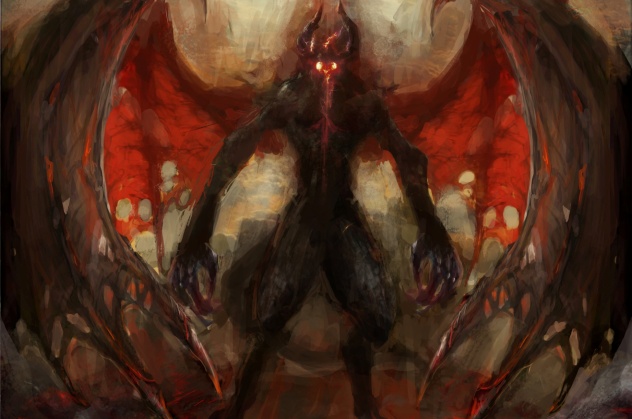
Christian-based Duotheism is a very small fragment of theistic Satanism, according to polytheistic Satanist Diane Vera. This form of Satanism accepts that Christian theology is true and that there is an ongoing war between God and Satan. The main difference is that these Satanists are cheering on the Devil rather than God. They believe that God and Satan are the two most powerful beings in the universe and that Satan has enough power to eventually overpower God and win the war.
Vera claims that the idea of duotheism and warring gods comes from ancient Zoroastrian beliefs about the eternal war between Ahura Mazda, the God of Light, and Ahriman, the God of Darkness. Some of these Satanists see the Devil as being “the good guy” rather than “the bad guy,” as he is the one who has given humans knowledge and freedom while God wants to keep humans as slaves. In this sense, Christian-based Duotheism is an inverted form of Christianity. Satan is the hero, liberating humanity from an evil and tyrannical God.
7 Anti-Cosmic Satanism

Anti-Cosmic Satanism, also called Chaos-Gnosticism, believes that the cosmic order created by God is nothing more than a grand fabrication, and behind that illusion is an endless and formless chaos. One practitioner of this form of Satanism is an occultist author who goes by the name of Vexior 218. In an interview, Vexior explained that he did believe in an all-powerful god called the Demiurge, who has been interpreted as Odin in Norse religion and God in Christianity. He created restrictions—time, space, and flesh—to bound our otherwise free spirits. This is where figures like Loki and Satan come in. They are rebels against the Demiurge’s tyrannical rule and aim to destroy his control. Other anti-cosmic gods might include Tiamat, Baal, Asmodeus, Lilith, and more.
This form of Satanism, much like its other non-LaVeyan variants, is very obscure and unfortunately hard to find much information on. It’s most well-known member was Jon Nodtveidt of the black metal band Dissection which we’ve mentioned before. He was a member of the Temple of Black Light, once called the Misanthropic Luciferian Order, an organization with the goal of destroying the order of the Demiurge and bringing the universe back to the chaos that was originally there. The Temple used many invocations to various deities and beings, especially Lilith.
6 Transcendental Satanism

Transcendental Satanism is a very unique form of Satanism created by a man named Matt “The Lord” Zane. As he documented in the first few pages of his book Transcendental Satanism, he took LSD and had a vision of Satan being cast from Heaven, followed by another vision of a man making a pact with Satan before the man was even born. The man would avoid Hell by doing Satan’s bidding but would have no knowledge of making such a deal throughout his lifetime. Instead, he would help lead others to Hell while being under the delusion that he was actually doing God’s work. Zane said:
Satan wanted him to experience everything the world had to offer and to create his own beliefs rather than accepting the beliefs of God. The man’s journeys would lead to a plethora of experience, which would inspire others to act in a way that would be in opposition to the will of God and cause them to create a separation. I see this separation as the Hell that people were being led to. The story wasn’t a warning about eternal damnation but one of spiritual evolution.
Transcendental Satanism is exactly that—a form of spiritual evolution with the end goal of the individual reuniting with what is called a Satanic Aspect. The Satanic Aspect is a hidden part of the self separated from consciousness. It influences us by helping to cultivate our consciousness. The paths to each individual’s Satanic Aspect are many, and nobody is required to go down the path that is laid out to them.
5 Demonolatry
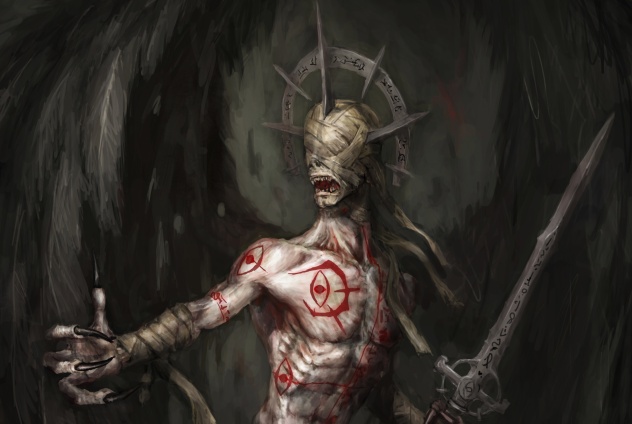
Demonolatry quite literally means “the worship of demons,” though modern demonolators do not actually worship demons. Instead, they “work with” demons, as each demon is seen as a force or energy that can be called upon to aid in rituals or magic. Traditional demonolators actually do worship demons that personify their own attributes.
It’s important to note that not all demonolators are necessarily Satanists, though they certainly can be. Each demonolator chooses their own patron deity, and they are certainly free to choose Satan, who represents the element of fire. However, there are many demons of different religions to choose from.
Demonolators have three different possible interpretations of demons. The first is that they are like the ones in Christianity—evil sinners and tempters. The second is what traditional demonolators believe—that demons are personified forces of energy. The third interpretation is that demons are “gods in their own right as Demon means divine power.” Regardless, demonolators believe that their practice will not result in any sort of perdition or divine punishment, as these are “merely perpetuated myths handed down from a religion long past its prime.”
4 Setians
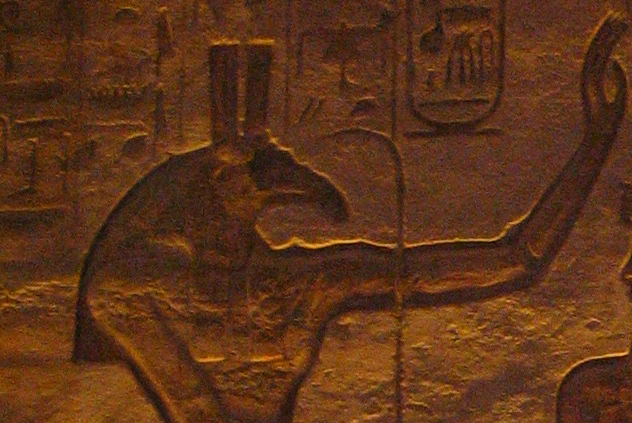
The Temple of Set was founded by LaVey’s former right-hand man Michael Aquino, who left the Church of Satan after LaVey had started to sell priesthood offices. The idea that LaVey would profit from the Church of Satan caused many members, including high priestess Lilith Sinclair, who eventually became Aquino’s wife, to resign from the church. Aquino and other defectors helped form the Temple of Set, which developed very different philosophies from the Church of Satan.
While LaVeyan Satanists don’t believe in any sort of god or deity, Setians “believe” in a suprapersonal entity known as Set. Set is the Egyptian god of violence and disorder, who eventually became known as the god of darkness and the enemy of all other Egyptian gods. In other words, Set is “the original Satanist: the ‘god’ against all false, man-imagined gods.”
LaVeyan Satanists believe that each member is their own personal god, and they seek to ascend to godhood. The goal of Setians is to achieve xeper, an Egyptian word that roughly means “I have come into being.” Setians believe that each person goes through a divine experience at some point or another and that it is possible to create more divine experiences through self-development, magic, and other means until the Setian finally achieves a level of godhood. This is the ultimate purpose of man.
3 Satanic Reds

The Satanic Reds don’t believe in Satan in the traditional sense but rather view him as a dark force that has existed since the beginning of time. Tani Jantsang, one of Satanic Reds’ most prominent figures, believes that the origin of the word “Satan” comes from two pre-Sanskrit words: sat, the word for “the boundless darkness,” and tan, which describes how this force stretches out and permeates into all things. In other words, sat means “being,” and tan means “becoming.” Whether or not this is the true root of the word “Satan” is unknown.
The Law of the Tan describes how sat is infused into every being. Each creature is connected to its own parents, and these connections form an intricate web that goes back to the beginning of life. They all follow their nature and are naturally at peace with their own chakra flow. The Nine Satanic Postulates expand on these beliefs, saying that each being is motivated by an inner force to constantly change and evolve according to its environment.
Those who go against their own nature are called Kipploths. According to the Satanic Reds, someone disrespecting what another person or creature is or turning against themselves is an act of evil:
The disrespect for what another creature IS, is a violation of ALL principles of life. [ . . . ] Disrespect means to NOT HONOR what another creature is. Or a human not respecting WHAT another human of another type IS. This disrespect is EVIL, it is like a war against the Great Darkness and it is thus, a war against the Self. The Dark Breath in that other person is the SAME Dark Breath that is in the offender. And, the Dark Breath CAN withdraw leaving a shell.
2 Polytheistic Satanism
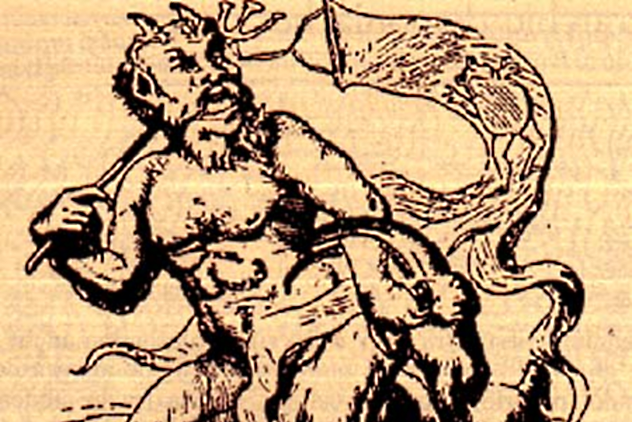
Polytheistic Satanism is exactly what it sounds like—the belief in many gods as opposed to just one god. The most famous polytheistic Satanist organization is the Church of Azazel, which is a New York City–based group open to all Satanists, occultists, and followers of the Left-Hand Path. They revere several distinct deities.
The Church of Azazel focuses on what they call the “rising gods of the modern West“—Satan/Azazel, Lilith, Prometheus, Ishtar, Pan, and Lucifer-of-Sophia. (Sophia was a Gnostic goddess who had many parallels with the story of Lucifer, along with the story of Adam and Eve.) All of these gods have been demonized by Abrahamic religions, yet they represent values and principles that the Church of Azazel strongly identifies with and social trends that are disliked by the religious right. For example, Prometheus represents knowledge and understanding, and Ishtar represents nature and sexuality. Most importantly, Satan is the one who encourages free thinking by challenging and questioning dogma.
The Church of Azazel doesn’t worship any gods in the traditional sense. Rather, they pay reverence and respect toward their gods and often feel drawn to one or more of them. They are also rather agnostic, knowing that the realm of the gods will never be completely knowable to mankind, and therefore follow what is called a here-and-now philosophy. The Church of Azazel does believe that the gods might manifest themselves within human affairs, particularly in social, economic, and religious trends.
1 The Cult Of Cthulu
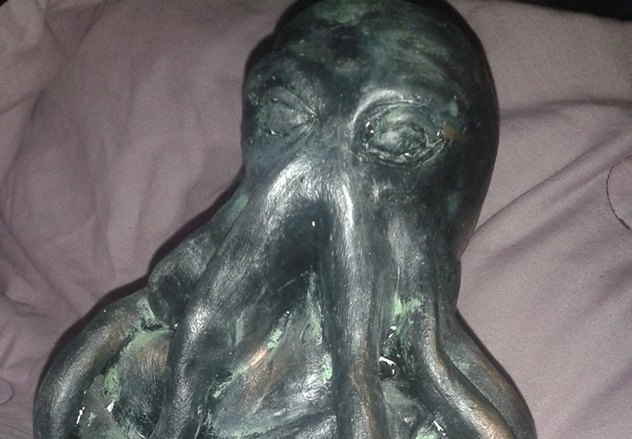
There is, surprisingly, a small religion that mixes the writings of H.P. Lovecraft with Satanism, black magic, and the Left-Hand Path. This is known as the Cult of Cthulu. Venger Satanis, the cult’s founder, acknowledges that many people don’t accept Lovecraft’s writings as reality, to which he responds: “There is no reality. What the human mind calls reality does not exist.” Satanis claims that everyone is locked inside a paradigm called Generally Accepted Reality, and he has the power to shape his own reality according to his own will.
“Long ago, I chose to believe in Cthulhu, Satan, Nyarlathotep, Yog Sothoth, and the Tsalal,” he writes. “My belief gives these gelatinous, winged, blasphemous, and sickeningly undulant fiends power.”
The Cult of Cthulu claims that the Old Ones resided over the Earth countless ages ago and that they spread their dark, forbidden, and arcane knowledge to humans. The Lesser Gods were chained and whipped, and their spilled blood created the universe. Some of the surviving Lesser Gods managed to break free and banish the Old Ones.
The Cult of Cthulu sees the Old Ones in the same way that many other Satanists see Lucifer, as beings that wished to bring knowledge and free humanity from enslavement. The Cult of Cthulu believes that the vast majority of human beings will live their lives trapped in the Generally Accepted Reality, and their suffering gives energy to the Lesser Gods. The only way to break free is to awaken and achieve True Consciousness. The Greater Reality that lies within each Cthulu Cultist goes by many names—the black flame, the mark of Satan, the gift of Set, or the call of Cthulu.
All evil gods—Cthulu, Satan, Loki, etc.—are thought to be merely extensions of the “formless black essence” that is underneath Generally Accepted Reality. These gods can be thought of as real or symbolic; it doesn’t matter how one chooses to interpret them. They all represent the concept of self-empowerment, the cult’s highest law.
Patrick W. Dunne studied Business and Psychology at Chaminade University of Honolulu. He currently works as a full-time marketer and part-time freelance writer. You can follow him on LinkedIn or Twitter.








